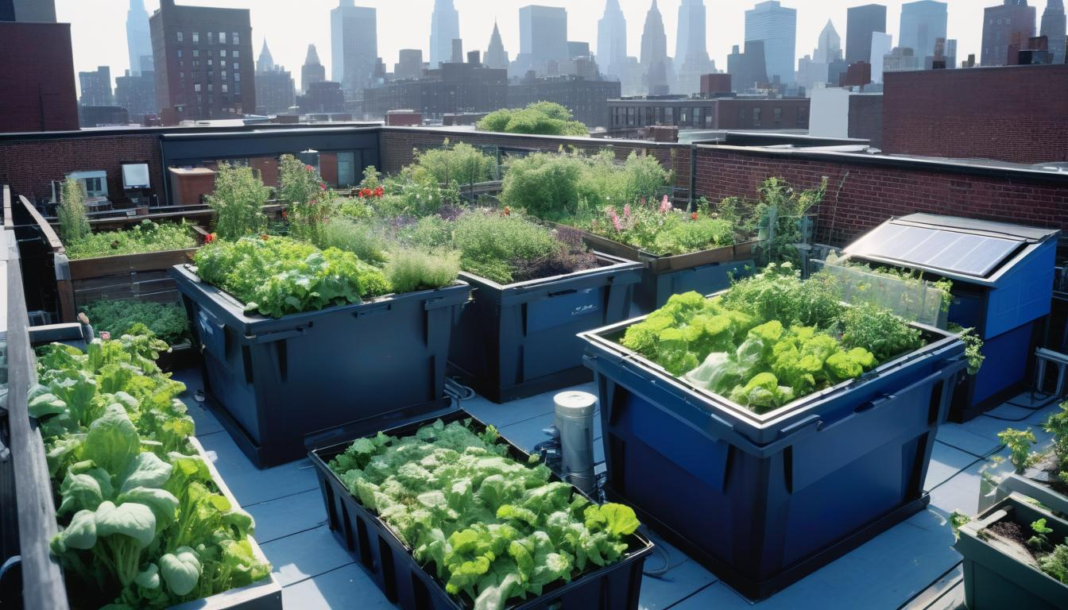Mastering Roof Gardening: A Complete Guide to Urban Green Spaces
Introduction
As urbanization expands, green spaces are diminishing. Roof gardens offer an effective solution, benefiting the environment and economy while enhancing aesthetics. This guide covers plant selection, watering techniques, soil types, and common gardening mistakes to avoid.
The Environmental and Economic Benefits of Roof Gardens
Environmental Benefits
- Reduces Urban Heat Islands: Absorbs heat, lowering surrounding temperatures.
- Improves Air Quality: Plants filter pollutants and release oxygen.
- Enhances Biodiversity: Supports birds, bees, and beneficial insects.
- Stormwater Management: Absorbs rainwater, reducing urban flooding.
Economic and Social Benefits
- Lowers Energy Costs: Provides insulation, reducing heating/cooling expenses.
- Increases Property Value: Eco-friendly features raise real estate worth.
- Boosts Mental Well-being: Green spaces reduce stress and improve mood.
- Provides Fresh Produce: Rooftop gardens can supply herbs, vegetables, and fruits.
Selecting the Right Plants for Your Roof Garden
- Drought-Tolerant: Best for hot, dry climates (Succulents, Lavender, Sedum).
- Native Plants: Boosts biodiversity (Wildflowers, Grasses, Ferns).
- Edible Plants: Perfect for urban farming (Herbs, Tomatoes, Peppers).
- Shade-Loving: Suitable for less sun-exposed areas (Ferns, Hostas, Caladiums).
Proper Watering Techniques
- Succulents & Cacti: Water every 7–10 days.
- Herbs & Vegetables: Water every 2–3 days.
- Flowering Plants: Water every 3–5 days.
- Large Shrubs/Trees: Water once a week.
Watering Tips
Water early in the morning or late in the evening to prevent evaporation. Use a drip irrigation system for efficiency and ensure well-draining pots to avoid root rot.
Choosing the Right Soil
- Loamy Soil: Ideal for general gardening.
- Sandy Soil: Suitable for drought-resistant plants.
- Clay Soil: Retains moisture, good for moisture-loving plants.
- Organic Compost: Adds nutrients to all plant types.
Common Roof Garden Mistakes and How to Avoid Them
- Overcrowding Plants: Ensure proper spacing for airflow and nutrient availability.
- Ignoring Drainage Needs: Use well-draining soil and ensure pot drainage holes.
- Overwatering or Underwatering: Follow plant-specific watering schedules.
- Choosing Unsuitable Plants: Match plants to light exposure and climate conditions.
- Not Considering Wind Exposure: Use wind-resistant species or install wind barriers.
- Lack of Maintenance Planning: Regular pruning, watering, and fertilizing are essential.
The Environmental and Economic Benefits of Roof Gardens
| Benefit | Description |
|---|---|
| Reduces Urban Heat Islands | Absorbs heat, reducing surrounding temperatures. |
| Improves Air Quality | Plants filter pollutants and release oxygen. |
| Enhances Biodiversity | Supports birds, bees, and beneficial insects. |
| Stormwater Management | Absorbs rainwater, reducing urban flooding. |
| Lowers Energy Costs | Provides insulation, reducing heating/cooling expenses. |
| Increases Property Value | Eco-friendly features raise real estate worth. |
| Boosts Mental Well-being | Green spaces reduce stress and improve mood. |
| Provides Fresh Produce | Rooftop gardens can supply herbs, vegetables, and fruits. |
Watering Schedule for Common Plants
| Plant Type | Watering Frequency |
|---|---|
| Succulents & Cacti | Every 7–10 days |
| Herbs & Vegetables | Every 2–3 days |
| Flowering Plants | Every 3–5 days |
| Large Shrubs/Trees | Once a week |
Conclusion
Roof gardens offer environmental and personal benefits, improving air quality, reducing heat, and providing fresh produce. By selecting the right plants, understanding watering needs, and maintaining proper soil conditions, you can create a thriving rooftop oasis.

